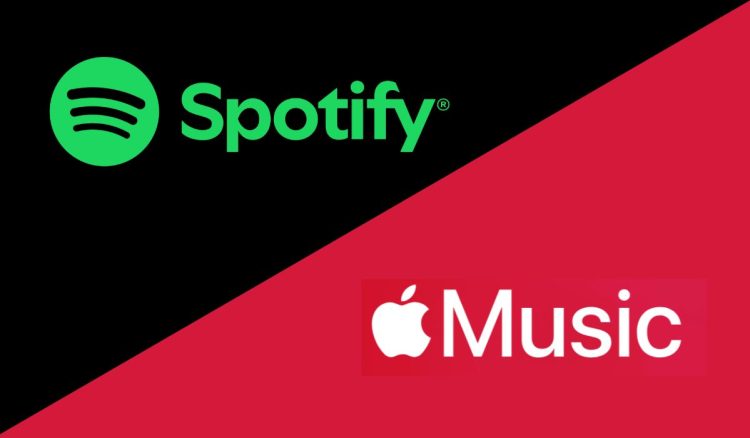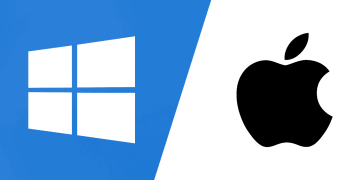Introduction
Music has always been an essential part of human culture. With technological advancements, music consumption has evolved, and traditional ways of listening to music, such as CDs, have been replaced by digital streaming platforms. The rise of services like Spotify and Apple Music has revolutionized the way we access, discover, and enjoy music. For music enthusiasts who value sound quality, personalized recommendations, and an expansive library, choosing the right streaming platform is essential.
While both Spotify and Apple Music offer comprehensive music catalogs, playlists, and high-quality audio, each service has unique features tailored to different listening preferences. This article will explore the key features of Spotify and Apple Music, comparing their audio quality, user experience, music discovery capabilities, pricing, and integration with devices. By the end, you’ll be equipped to make an informed decision about which platform best meets your needs.
1. Spotify: The Streaming Giant with Cutting-Edge Discovery Features
1.1 The Evolution of Spotify
Launched in 2008 in Sweden, Spotify revolutionized the music industry by offering legal streaming with access to millions of songs. Over time, it has become the leading global streaming platform, boasting over 400 million users and 180 million paid subscribers. Spotify’s freemium model, where users can access a limited version of the platform for free or pay for additional features, helped it rapidly gain popularity worldwide.
Spotify’s strength lies in its user-friendly interface, vast music library, and most notably, its innovative music discovery features. From curated playlists to personalized recommendations, Spotify has developed an unmatched ability to cater to the individual tastes of its listeners.
1.2 Music Library and Discoverability
Spotify offers an extensive catalog with over 70 million tracks spanning all genres, from mainstream pop to niche indie bands. With an intuitive search function, users can easily find new music, artists, and albums.
Personalized Playlists and Recommendations
Spotify’s algorithm-driven recommendations are one of the platform’s biggest selling points. It uses machine learning and listening habits to create personalized playlists for each user. Features like Discover Weekly, Release Radar, and Daily Mix are based on your listening history and preferences. These algorithms help users discover new artists, genres, and tracks they may not have found otherwise.
Additionally, Spotify’s Playlist Editor allows users to curate their own playlists, while the Spotify Radio feature generates endless stations based on the user’s musical taste.
Collaborative Playlists
Spotify also excels in collaborative playlists, which allows multiple users to contribute to a single playlist, making it perfect for friends and groups to share music.
1.3 Sound Quality
Spotify offers multiple audio quality settings, but the sound quality can vary depending on the user’s plan and internet connection:
- Free Plan: 160 kbps on desktop and 96 kbps on mobile.
- Premium Plan: Up to 320 kbps on desktop, mobile, and web apps. Premium subscribers can enjoy higher sound fidelity for a better listening experience, but it’s important to note that this isn’t lossless audio.
Although Spotify’s sound quality is good, it is often considered inferior to Apple Music, which supports higher-quality formats, especially for audiophiles.
1.4 Pricing and Plans
Spotify offers a flexible pricing structure, including a free, ad-supported plan and multiple paid tiers:
- Free Plan: Ad-supported with limited features, including shuffle-only play and low audio quality.
- Spotify Premium: $9.99/month, ad-free, offline listening, and high-quality streaming.
- Spotify Family: $14.99/month, which allows up to 6 accounts on one subscription.
- Spotify Student: $4.99/month, offering the same benefits as Premium at half the price for students.
Spotify is also available as a premium duo plan, perfect for couples who want to share an account at a lower cost.
1.5 Device Compatibility and Integration
Spotify’s versatility is unmatched when it comes to device compatibility. It works across a wide variety of devices, from smartphones and computers to smart speakers, smart TVs, and gaming consoles like PlayStation and Xbox.
Spotify’s Connect feature allows users to control their music from one device and stream it to another, making it easy to play music throughout the house. Additionally, it integrates seamlessly with services like Google Assistant and Alexa, allowing for hands-free control.
1.6 Social Features and Community
Spotify has made a significant push toward integrating social features into its platform. Spotify Wrapped, a year-end summary of your listening habits, is a highly anticipated feature that encourages users to share their music tastes on social media. Furthermore, friend activity lets you see what friends are listening to, creating a social music experience.
Spotify is also actively expanding its support for podcasts, offering a vast range of podcasts across various genres. It’s a one-stop-shop for both music and spoken content, broadening the scope of entertainment available to users.
1.7 Future of Spotify
With its market dominance, Spotify is likely to continue pushing the boundaries of personalization and music discovery. The platform is expected to further integrate AI into its recommendation system, offering even more tailored playlists and personalized content. Moreover, its focus on podcast content and exclusive partnerships may drive further growth in the coming years.

2. Apple Music: The Audiophile’s Choice with Superior Sound Quality
2.1 The Growth of Apple Music
Launched in 2015, Apple Music was introduced as a direct competitor to Spotify. With the backing of Apple’s existing ecosystem and its established brand reputation, Apple Music quickly gained traction. Unlike Spotify, which was initially ad-supported, Apple Music operates solely on a subscription model. This ad-free experience is one of its major draws for listeners who value uninterrupted music.
Today, Apple Music boasts a subscriber base of over 70 million paying users, continuing to expand its catalog and services to maintain its position as a top music streaming platform.
2.2 Music Library and Content
Apple Music offers a similarly vast catalog, with over 70 million tracks available for streaming. However, what sets Apple Music apart is its integration with the Apple ecosystem, allowing subscribers to access music not only through the platform itself but also via iTunes, iCloud Music Library, and Siri.
Curated Playlists and Radio Stations
Apple Music offers editorially curated playlists and radio stations that set it apart from Spotify’s algorithm-driven discovery. Apple’s expert curators create highly specialized playlists for every genre, mood, or occasion. The Beats 1 radio station, a global station with live shows and DJ-curated playlists, has become one of the most popular features of Apple Music.
Integration with Apple Ecosystem
Apple Music benefits from being deeply integrated with Apple’s ecosystem. It syncs seamlessly with other Apple devices, such as iPhone, iPad, Mac, Apple Watch, and HomePod. For Apple users, this integration is incredibly convenient, allowing for easy access to music across various devices without needing to log in repeatedly.
2.3 Sound Quality and Audio Features
One of Apple Music’s strongest advantages is its superior sound quality. Apple offers lossless audio in Apple Lossless Audio Codec (ALAC) format, which provides better quality than Spotify’s highest settings.
- Standard Quality: Up to 256 kbps AAC on mobile and desktop devices.
- Lossless Audio: Apple Music’s lossless format offers high-quality streams in multiple bit depths (16-bit, 24-bit) and sample rates (up to 192 kHz). This is a significant step forward for audiophiles who demand the highest audio quality.
Moreover, Spatial Audio with Dolby Atmos is available to all users, providing an immersive 3D sound experience for supported tracks.
2.4 Pricing and Plans
Apple Music offers a similarly flexible pricing model:
- Individual Plan: $9.99/month, includes full access to the music catalog, lossless audio, and ad-free listening.
- Family Plan: $14.99/month, allows for up to 6 members in a single household.
- Student Plan: $4.99/month for students with all features of the individual plan.
- Apple One Bundle: Includes Apple Music, Apple TV+, Apple Arcade, and iCloud storage at a discounted rate, starting from $14.95/month.
2.5 User Experience and Accessibility
Apple Music has a sleek, intuitive interface, similar to other Apple services. It allows for easy navigation, offering features like libraries, playlists, and radio stations in a clean and well-organized layout. The app is available on iOS, macOS, Android, and Windows, with Siri integration offering hands-free music control.
One of Apple Music’s strengths is the ability to sync music across devices via iCloud, so you can listen to your music library anywhere. This makes Apple Music a great choice for users already embedded in the Apple ecosystem.
3. Key Differences and Final Verdict
| Feature | Spotify | Apple Music |
|---|---|---|
| Sound Quality | Up to 320 kbps, no lossless support. | Up to lossless, high-res formats available. |
| Music Discovery | Algorithmic playlists and personal recommendations. | Curated playlists by experts and artists, along with radio stations. |
| Compatibility | Available on multiple platforms, including gaming consoles and smart devices. | Best for Apple ecosystem users, but also available on Android and Windows. |
| Subscription Plans | Flexible pricing, including a free tier. | No free tier, but includes various plans for families and students. |
| Device Integration | Seamless integration with smart speakers, Alexa, and Google Assistant. | Deep integration with Apple’s ecosystem, including Siri and HomePod. |
| Exclusive Content | Focus on original podcasts and artist exclusives. | Focus on artist radio shows and exclusive releases. |
Which Platform Should You Choose?
- Choose Spotify if you’re looking for a diverse music library, personalized music discovery, and social features. Spotify is perfect for users who enjoy creating playlists, discovering new tracks through algorithms, and interacting with friends.
- Choose Apple Music if you’re an audiophile who demands lossless audio, and you’re already embedded within the Apple ecosystem. It’s also ideal for those who prefer curated playlists and expert selections over algorithm-driven content.
Conclusion
In the battle between Spotify and Apple Music, both platforms have their merits, but the choice ultimately comes down to your specific needs and preferences. For music enthusiasts, whether you’re a casual listener, audiophile, or someone who values music discovery, both services provide an exceptional listening experience.
Spotify leads the way in discovery and personalized recommendations, while Apple Music stands out for sound quality and seamless integration with the Apple ecosystem.












































